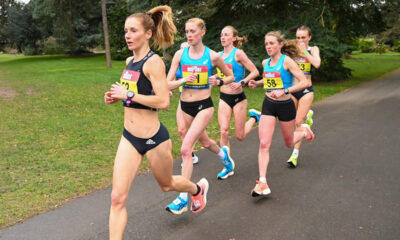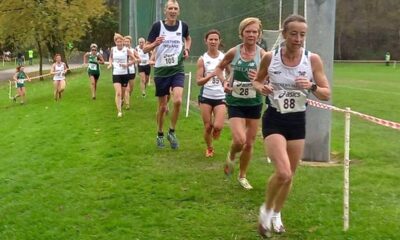
In the first of a series of articles by physiotherapists Matt Bergin and Mark Buckingham, the experts talk about simple breathing techniques that could help anyone recovering from illness.
Whilst this isn’t specific for running I’ve had a few runners recovering from COVID-19 that have actually found it helpful. As well as this athletes slumped around the house all day in general might benefit from thinking about their breathing too.
If you are recovering from illness or struggling with breathlessness, or even fear, anxiety or panic, learning some simple breathing techniques can really help.
It is essential to keep good lung function and breathing patterns to ventilate all the lung to reduce infection by mobilising and clearing the whole of the lung of fluids.
Your lungs sit within the protective cage of your ribs, with the diaphragm – the dome-shaped muscle, at the bottom. It is the diaphragm that plays a major role in breathing.
Breathe it all in
As you take a breath in the diaphragm contracts and flattens, increasing the space in the chest, allowing air to rush into your lungs. The opposite then happens when you breathe out.
Good diaphragm strength improves cough effectiveness and makes it harder for bugs to take hold – which is the difficulty people have with this virus.
When we get breathless or spend hours slumped on the sofa or over your laptop, we do not effectively use the diaphragm and we revert to breathing only with the top of the lungs, and the lower parts become stagnant. This then in turns reduces the oxygen uptake in the blood and leads to more feelings of breathlessness…..a vicious cycle.
You can get control of this as well as exercise the lungs and clear the tubes more effectively by working on your breathing pattern.
Posture can be key
To start with think about sitting back in a chair and taking pressure off your tummy. This allows space for the diaphragm to move. If you can’t sit back, then lean forwards with your elbows on your knees to let your tummy space to expand.
Breathing Exercises
The active cycle of breathing techniques (ACBT) is an effective way to help clear sputum from your chest. ACBT is simply a set of exercises that helps loosen and remove secretions from deep in your lungs and airways.
Breathing Control
Breathing control is slow, controlled breathing, using as little effort as possible.
- Check your posture (as above).
Relax your shoulders and think about breathing in with your tummy.- Place one hand on your tummy and one on the chest, feel the movement.
- Take a slow breath in through your nose, using your tummy
- As you breathe out purse your lips – this helps to open up the airways
- Gradually make the breaths slower and deeper
Deep Breathing
Deep breathing allows the lungs to fully expand, especially the lower parts.
- Take a long deep breath in through the nose, using your tummy to fully expand your lungs.
- At the end of the breath in you might feel the ribs lifting, this is good. It should NOT be the first movement though.
- What you DON’T want is your shoulders lifting up. Doing this leads to issues elsewhere – neck/shoulder tightness predominantly.
- It can also be helpful to hold your breath for a couple of seconds at the end of the breath in, to really allow the air to get to the depths of your lungs.
- Breathe out gently and relaxed, as if you’re sighing.
- Repeat 3-5x
Huffing or Coughing
Huffing is brilliant at shifting reluctant materials from the depths of the lungs to the central tubes ready to be coughed out. Better than coughing and nicer on the throat. If when performing you hear a rattling sound, you are doing it right.
- Perform the huff on the breath out. You should have an open mouth, and imagine you are trying to steam up a mirror, rather than coughing. Use your tummy muscles to help you squeeze the air out.
- This can either be a gentle, long huff or shorter, sharper huff.
- Repeat 3x
- Each cycle of huffing should be followed by breathing control.
If you have found this sequence of exercises has not completely cleared the chest it may then be worth performing a couple of coughs.
- At the end of the huffing, perform 1-2 short coughs, with chin to chest.
- The temptation is often to continuously and aggressively cough in the attempt to remove fluid, avoid this. It will cause irritation in the throat and will make you more breathless.
Working on these exercises several times a day will help enormously to ventilate the lungs and prepare you to better fight the worst effects of this virus.
Matt Bergin and Mark Buckingham are both chartered physiotherapists at Witty, Pask and Buckingham. For more information on both, or the clinic as a whole, click here. They are still able to offer video consultations within the current situation.



















